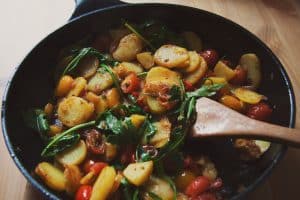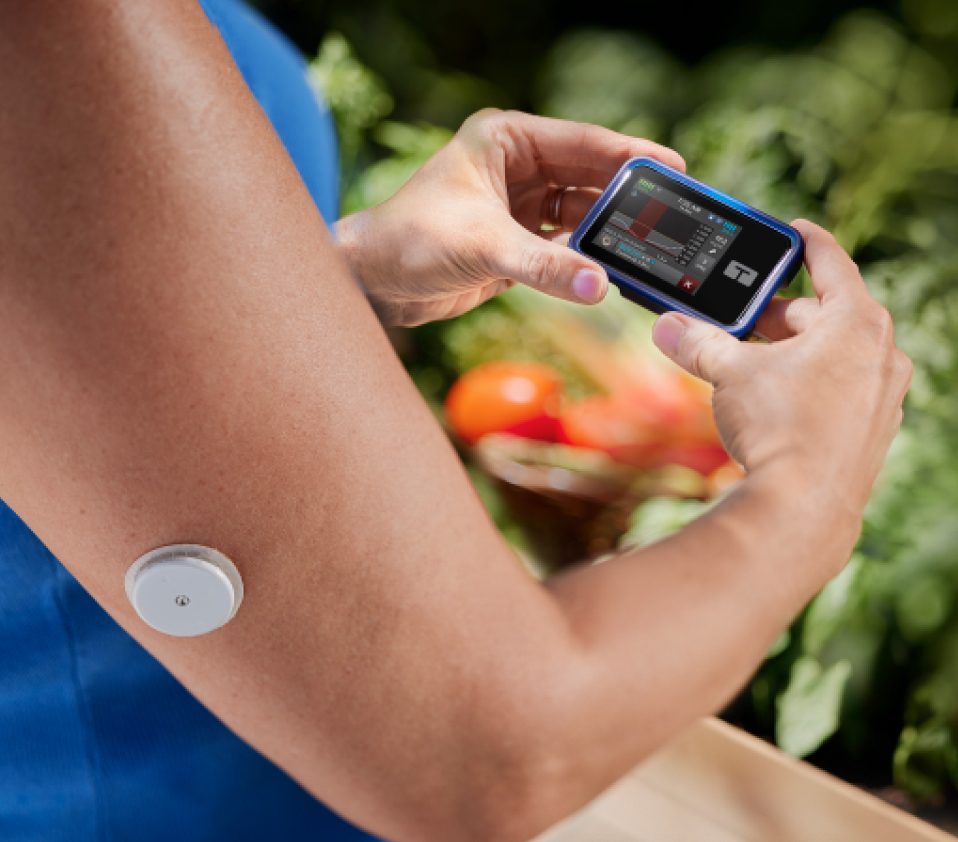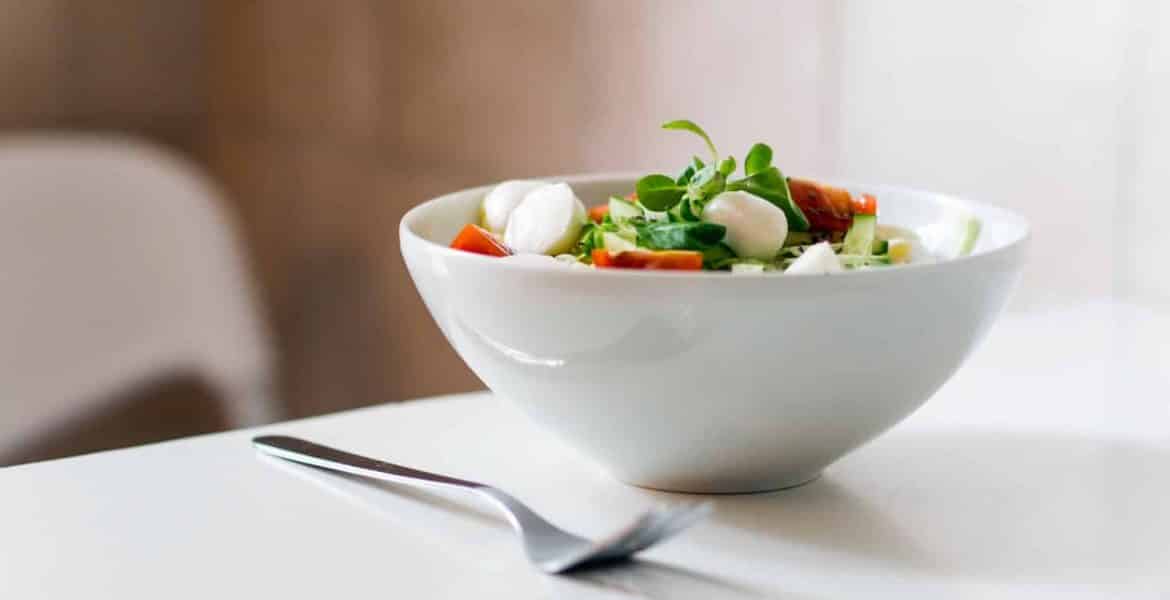Nancy Baughn had tried everything. She counted carbs and weighed her food. She checked her blood sugars and visited her doctor. But after an eight-year battle with type 2 diabetes, those blood sugars were only getting worse.
“I had two friends with diabetes and they were already on kidney dialysis and starting to lose their eyesight. Once already had his leg amputated below the knee. I had this horrible feeling that my diabetes was just a slow, progressive death sentence. So I was willing to look at any alternative out there.”
Luckily, Nancy did find an alternative. It came while she was drinking her morning coffee and reading the Washington Post.
“Struggling with diabetes?” The words jumped off the page. “Join a clinical study to discover how a plant-based diet impacts diabetes control.”
A plant-based diet? Nancy thought. Now that’s something I haven’t tried. But I’ve been so careful with the American Diabetes Association diet. Could this really be more effective?
Nancy was afraid to get her hopes up but decided to call anyway. Within a few weeks, her plant-based makeover had begun. Her pantry and fridge were bursting with kale, tomatoes, beans, rice, peaches, grapes, and other whole, plant-based foods.
The rules of the study were simple. Nancy was required to eat foods that were:
- Plant-based (no animal products)
- Low in fat
- Low in refined sugars (low-glycemic index)
Nancy was thrilled that she didn’t have to count carbs or calories anymore:
“On the ADA diet I had to weigh and measure and keep track of exchanges. But with a plant-based diet, if you eat just plainly, you can eat what you want. You’re not measuring, you’re not weighing. I just found it a much simpler way to cook and eat. And the food is very satisfying. I never felt hungry. I was enjoying food more than ever.”

The program was simple enough to follow. But was it working? Absolutely.
“Almost immediately upon starting this diet, I noticed that I felt better. I could tell my blood glucose numbers were dropping, because, of course, I checked them a number of times a day. At the beginning of the study, I weighed 196 pounds and my Hemoglobin A1C was 8.4 This placed me at a high risk for heart disease, stroke, and other diabetes complications. Less than four months later, the number had dropped to 5.4, and I was also losing weight. So I needed to cut back my medications dramatically.”
Nancy was shocked to discover that the new diet also came with several very unexpected health benefits. With more energy than she knew what to do with, she started skipping her usual afternoon nap. Her joint pain vanished and she noticed improvements in her mood.
By the end of the 18-month study, Nancy had lost 48 pounds and no longer fit the diagnostic criteria for diabetes. The study was over, but Nancy’s new lifestyle was not.
“Of course, there was no way I wanted to go back to the old way. I knew that this change of life was nothing but positive for me. The effects had been amazing, healthy, and rapid. The study ended about 10 years ago, but I’ve been following the guidelines ever since. At my last checkup, my doctor told me, ‘You know, I wish everybody’s numbers were as perfect as yours.’ I’m kind of proud of that, because I’m 74 years old now.”
Nancy credits the plant-based diet with helping her get her life back:
“I think about what my life would be like if I hadn’t made this change. My two friends with diabetes have since passed away. One had a heart attack during kidney dialysis. I’ve already laid out my calendar for the trips I’m taking next year. I don’t think I would be able to do that if my eyesight was going, if I had to go on kidney dialysis, if I’d lost a limb.
Eating vegan gave me the hope I wanted to lead a healthy, full life. I have more energy now than I’ve ever had. My friends joke that they’ll have to put a GPS on me to keep up with me. I expect to live many more years and to be busy all of those years, and that to me is the gift of eating plant-based.”
Not Alone
Nancy wasn’t the only one who got her health back. This study, conducted by Neal Barnard, included about 100 people with type 2 diabetes. Half of them were assigned to follow the diet recommended by the American Diabetes Association. This diet emphasizes portion control and carbohydrate restriction.

The other half of the group (including Nancy) was assigned to following the plant-based diet low in fat and sugar. They didn’t have to count calories or carbs. In fact, they ate significantly more carbohydrates than the ADA group, but were careful about the kinds of carbs they ate. They also avoided animal products, added sugars, and oils.
Both groups experienced improvements, but the plant-based group had much more dramatic results than those on the ADA diet. In fact, the plant-based diet was three times more effective at lowering blood sugars than the ADA diet. The ADA group didn’t need to adjust their medications at the end of the 12 weeks, but two-thirds of the people on the plant-based diet lowered their diabetes meds.
The plant-based group also lost twice as much weight, significantly lowered their risk for complications, lowered their cholesterol, and experienced multiple other health benefits. Like Nancy, several other participants eventually reversed their diabetes completely.
Many other studies have shown similar results. A growing number of healthcare providers, researchers, and former diabetics are discovering the power of a plant-based diet, not to just manage type 2 diabetes, but to completely reverse it.
Hope For You
Perhaps like Nancy, you’ve struggled for years to control your blood sugars or weight. Despite your best efforts, you continue to fight an uphill battle. Don’t give up. If good nutrition can work for Nancy, it can work for you. In fact, health may be much more attainable (and more delicious) than you could even imagine.
Food Is Medicine
Hippocrates was an ancient Greek physician who is considered to be the father of Western medicine. Over two thousand years ago, he told his patients: “Let your food be your medicine, and your medicine be your food.” Healthy food is powerful medicine.
Balanced plant-based eating can resolve the underlying cause of high blood sugar: insulin resistance. Delicious, plant-based recipes like the ones you’ll find in Life and Health’s website can actually fight your insulin resistance, lower your blood sugars, and dramatically improve your health.
Healthy eating is actually pretty simple. Foods can be divided into three groups: green light, yellow light, and red light foods.
Green Light Foods
Aim to get 80-90% of your calories from green light foods.
- Vegetables
- Legumes
- Fresh fruit
- Unrefined whole grains
- Whole food fats
Yellow Light Foods
Only a small percentage of your calories should come from these foods.
- Processed whole grains
- Processed fruits & veggies
- Meat substitutes
- Virgin oils
- Animal products
- Organic, fat-free, low-fat dairy products
- Eggs
- Cold water fish (trout, mackerel, herring, salmon, and water-packed tuna)
- White meats
Red Light Foods
Ideally, red light foods should be completely avoided, but if you do choose to eat them, please make sure it’s on a very limited basis.
- Refined grains
- Refined sugars
- Regular oils
- Processed, packaged foods
- Fried foods
- Cheese and full-fat dairy
- Red meats
- Processed meats
Excerpted from Life and Health’s diabetic-friendly cookbook, From Plant to Plate: Diabetes Edition







